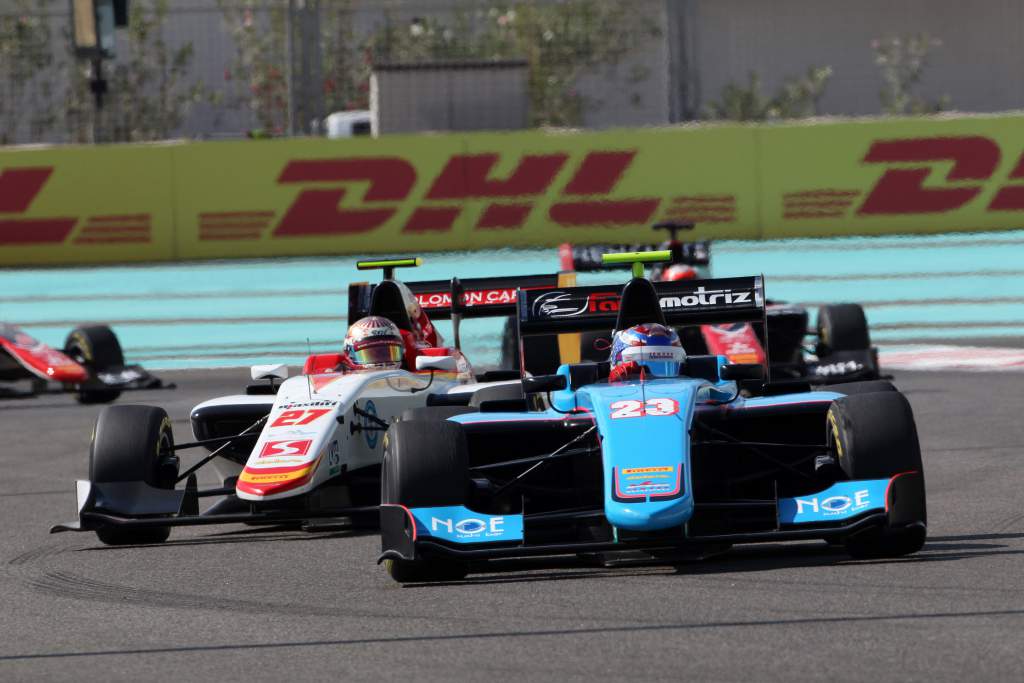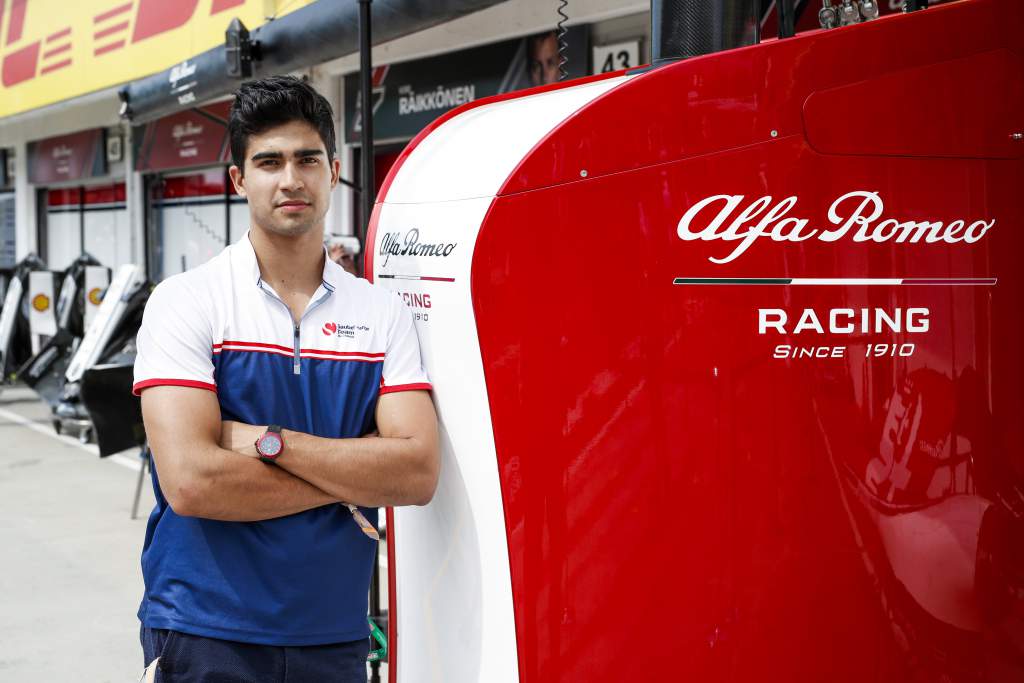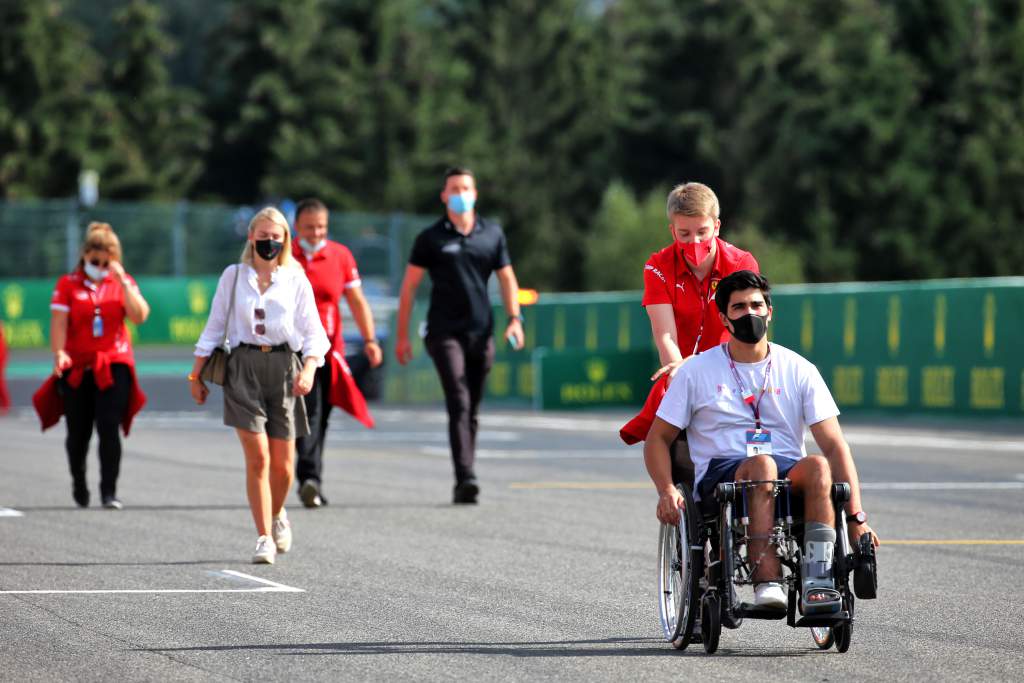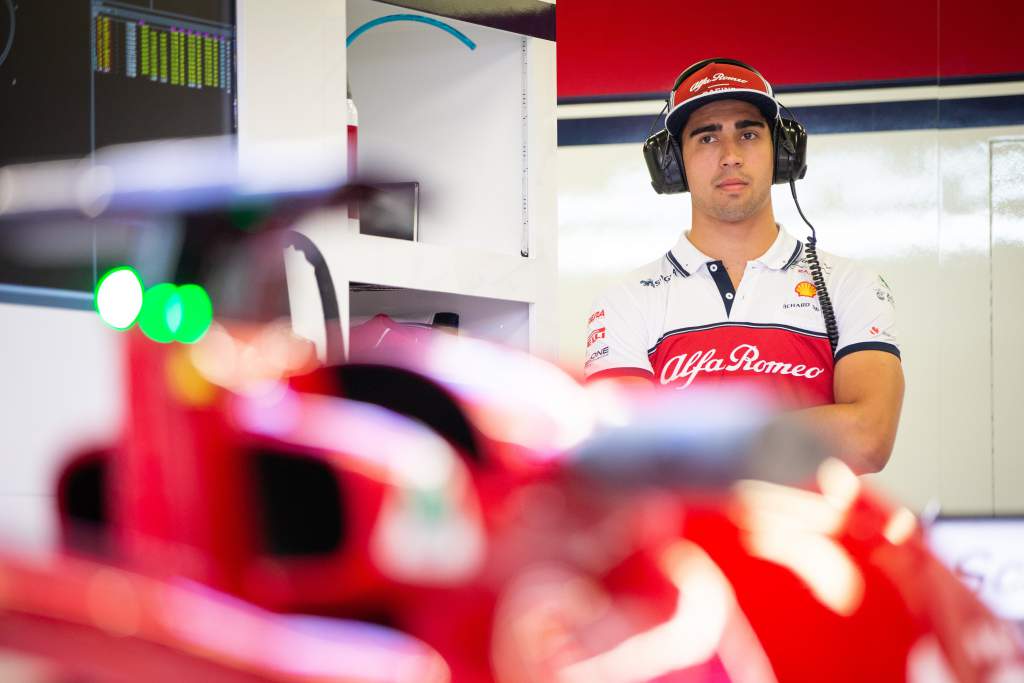Up Next

I wrote this opinion in 2018, and I wrote it again in 2019 before his crash, so I have no problem sticking to my view. As a driver, Juan Manuel Correa is severely underrated.
The news that he’ll return to racing on the Formula 1 ladder with top team ART Grand Prix in FIA Formula 3 this year has been greeted extremely warmly, as you’d expect given the battle the 21-year-old American has been through since the tragic Spa F2 crash in August 2019 that left him with devastating leg injuries.
But while a lot of focus will rightly be on the feel-good factor of Correa’s injury recovery, it’s worth reiterating just how promising he was looking before that crash too.
I first met JM in 2018 at the beginning of his GP3 campaign. I knew that, although he hadn’t taken an F4 title in his first two years in car racing, he was extremely highly rated by his previous team Prema.
Indeed it still had a sort of gravitational pull for him – even though he was now racing for a different team in Jenzer, he would be often seen chilling in the Prema garage.
He seemed to initially struggle in F4 to cope with the attention focused on his higher-profile team-mates like Mick Schumacher, and GP3 was a welcome breath of fresh air for someone who arguably made the F4 step a little too soon.
The Jenzer team he joined struggled in 2018 – the final year of a GP3 category utterly dominated by, coincidentally, ART – and the results show as much.
Correa finished 12th in the championship, the best of Jenzer’s full-season drivers, with a fastest lap and a best finish of fourth in the second race of the season his top achievements.
OK, it was a scrappy campaign. The biggest frustration was his over-aggression in wheel-to-wheel combat, which would affect his tyre wear and put him in positions where he was more likely to crash.

He drove with the ferocity of a driver who would anger himself up to the highest level of performance, but without the occasional restraint to complete the package and acknowledge that sometimes letting a car pass is for the greater good.
The theme of team-mates begins here. Despite the year’s struggles Correa was ahead of team-mate David Beckmann after eight races, before Beckmann promptly moved to Trident for the Hungary round. Beckmann would go on a spree of taking a top seven in every race he finished in the remainder of the year, with three wins and a podium to boot in his new surroundings.
These things happen in junior formulas – people make advantageous team moves or unlock mid-season potential. The fact that Correa was ahead of Beckmann before the reshuffle only leaves us wondering what might have been if he’d jumped ship too.

A deal to become an Alfa Romeo F1 junior after joining the Sauber Junior Team (formerly Charouz) for 2019 in Formula 2 gave us another good team-mate comparison in Callum Ilott. That’s another driver who has shown on-track aggression that has cost him in the past.
Before the crash that ended his season at Spa and led to a not particularly well publicised fight for his life which was far more serious than many people realise, Correa had been ahead of Ilott in the standings, just as he had been with Beckmann the year before.
Better days like this one are in sight again for @JMCorrea__ 😌
He will race in @FIAFormula3 in 2021 after recovering from the serious injuries he suffered at Spa in 2019 👊#F1 #RoadToF1 pic.twitter.com/aBHiMdx7C8
— Formula 1 (@F1) February 1, 2021
He impressed the Alfa/Sauber personnel with an F1 test in a 2013 car at Monza, and delivered brilliant podiums at Baku and Paul Ricard in F2.
OK, they were both in reversed-grid races but the team that year struggled massively, particularly with its tyre wear.
Ilott would eventually find something after Spa which led to a pole the very next week at Monza, and he only finished outside of the top 10 once in the remainder of the season – adding a podium at Sochi.

Perhaps Correa would have benefitted from the step the team made too had he been able to continue.
This is not to besmirch Ilott, who encountered his own struggles and missed opportunities through 2019. It’s merely to point out that Ilott has gone on to all but dominate F2 in 2020, narrowly missing out on the title having stepped up to the UNI-Virtuosi Racing team.
Who says Correa couldn’t have done the same as Beckmann at Trident and Ilott at Virtuosi given he was ahead of both on an even playing field?
Motorsport fans can be hyper-critical, but when judging these emerging talents, there’s so much more to it than results.
There’s the millions of pounds – often of family money – on the shoulders of these young kids. There’s the weight of expectation of the cut-throat fans and media and there’s the uncertainty that tyre-dependant racing like F2 and F3/GP3 produce.
Correa has maintained, pretty much since he awoke from his coma, that he wanted to return to racing.

The extra pain his rehabilitation has required should not be underestimated. This has been a long and arduous journey, involving at least 20 surgeries, and there’s no certainty that Correa will rediscover the pace I’ve argued he had in the past. F3’s new three-races-per-weekend format adds to its physical challenge too.
But everyone will be rooting for him. If he has recovered sufficient strength in his legs, he has the driving talent to achieve the success his performances in 2018/19 showed was possible.





